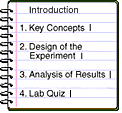
1. You begin by inflating the cuff. Once the pressure in the cuff is above the subject's systolic pressure (140 in this example), blood cannot flow below the cuff. You will hear no sound in the brachial artery when you listen with the stethoscope.

2. As you release the pressure valve and slowly deflate the cuff, blood begins to flow through the artery.
3. When the pressure in the cuff is between the systolic and diastolic pressure, you can hear a tapping sound with each pulse. The first tapping sound you hear indicates that blood has entered the artery. Record this reading as the systolic pressure. You continue to deflate the cuff until the tapping sounds cease.
4. The last tapping sound you hear indicates the diastolic pressure.
![]() Continue to Measuring Pulse.
Continue to Measuring Pulse.